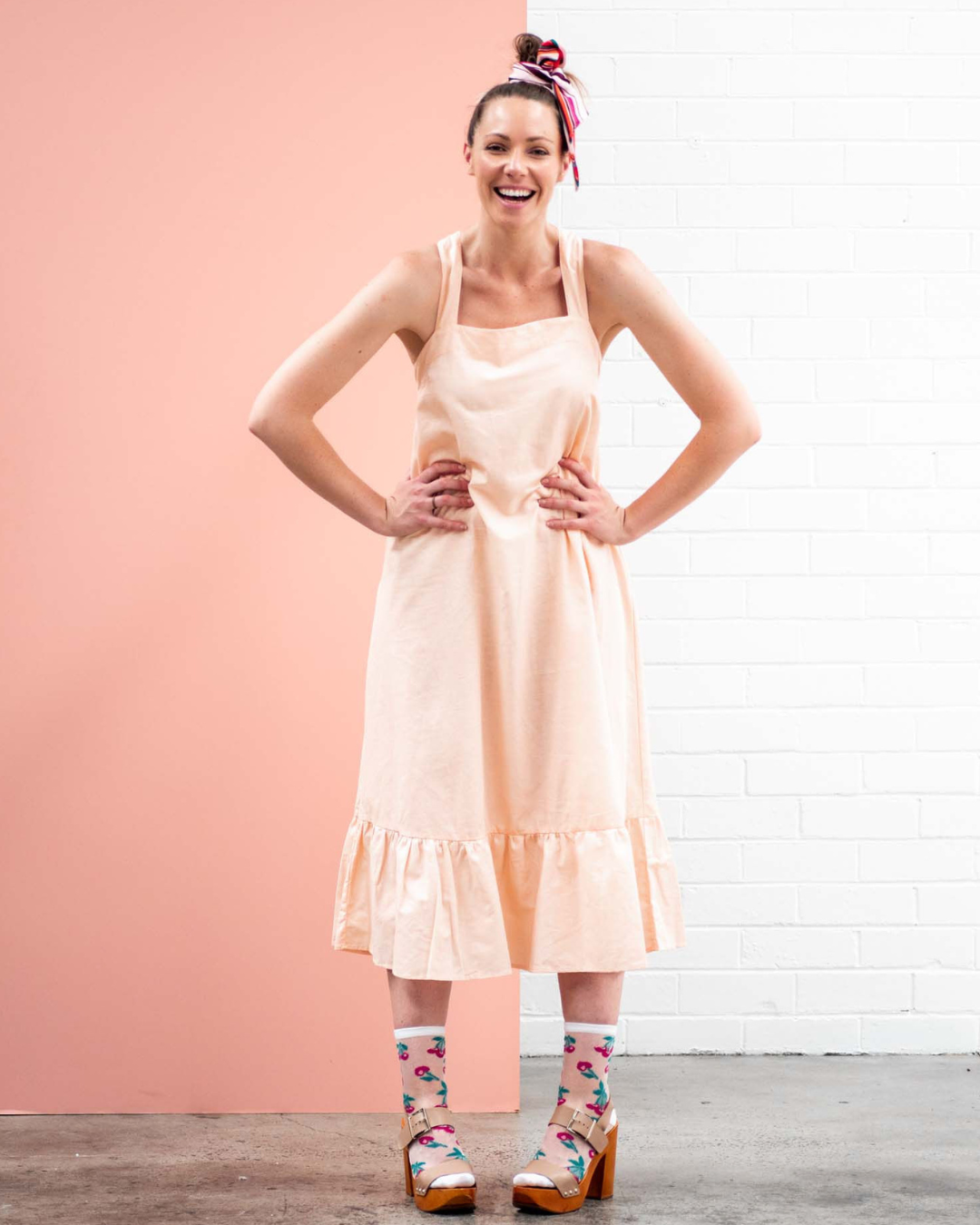We know fast fashion is a problem. The facts don’t lie. It’s wasteful, polluting, exploitative, and built on a system that thrives on overconsumption and disposability.
Fast fashion is a global disaster—and slow fashion is the solution.
For every destructive practice in fast fashion, slow fashion has an answer—a way forward that’s better for people, the planet, and the future of fashion.
Here’s what you need to know...
1. The plastic problem vs. natural fibres.
Fast fashion fact: Polyester—a plastic-based fabric—is found in over 60% of all clothing and sheds microplastics into the ocean every time it’s washed. Polyester takes up to 200 years to break down, polluting ecosystems and threatening marine life.
Slow fashion solution: Ethical brands prioritise natural, biodegradable fibres like organic cotton, hemp, wool, and linen, which break down without releasing toxins into the environment. You could throw a cotton dress into a hole in your backyard and in most environments, it would completely disappear within five months.
2. The waste crisis vs. circular fashion.
Fast fashion fact: The industry produces 92 million tonnes of textile waste each year—one garbage truck per second—and less than 1% of clothing is ever recycled into new garments.
Slow fashion solution: Slow fashion brands embrace circularity—designing with longevity in mind, offering take-back programs, repurposing materials, and using zero-waste production methods to reduce waste.
3. Modern slavery vs. ethical production.
Fast fashion fact: Over 75 million garment workers worldwide—mostly women—earn poverty wages, work in unsafe conditions, and face exploitation in fast fashion supply chains.
Slow fashion solution: Ethical brands ensure fair wages, safe working conditions, and transparency in their supply chains, empowering artisans and garment workers instead of exploiting them.
4. Toxic dyes vs. sustainable colouring.
Fast fashion fact: The textile industry is responsible for 20% of global water pollution, with toxic dyes and chemicals contaminating rivers and drinking water in production-heavy countries.
Slow fashion solution: Sustainable brands use low-impact, natural, or plant-based dyes, closed-loop water systems, and innovative colouring techniques that drastically reduce pollution.
5. Overproduction vs. made-to-order and slow releases.
Fast fashion fact: Brands like Shein release thousands of new styles every day, leading to overproduction and billions of unsold garments ending up in landfills annually.
Slow fashion solution: Ethical brands produce in small batches, offer pre-orders, and focus on timeless designs instead of trend-driven, mass-market dumping.
Slow fashion isn’t just another option—it’s the only sustainable future for fashion.
Fast fashion won’t change on its own, but slow fashion founders are already leading the way.
I know slow fashion is worth it, and if you're running an ethical, sustainable, circular, handmade, or slow fashion brand, I know you know it's worth it too. But how do you convince more customers that it is?
Join me for this month’s LIVE online workshop, F*ck Fast Fashion: The 7 Secrets of Successful Slow Fashion Brands, and I'll show you how.
This workshop isn’t about theory—it’s about action. You’ll walk away with real, proven strategies to grow your slow fashion brand, increase sales, and amplify your impact—without competing on price.
Because f*ck fast fashion. Are you with me?
Claire x




